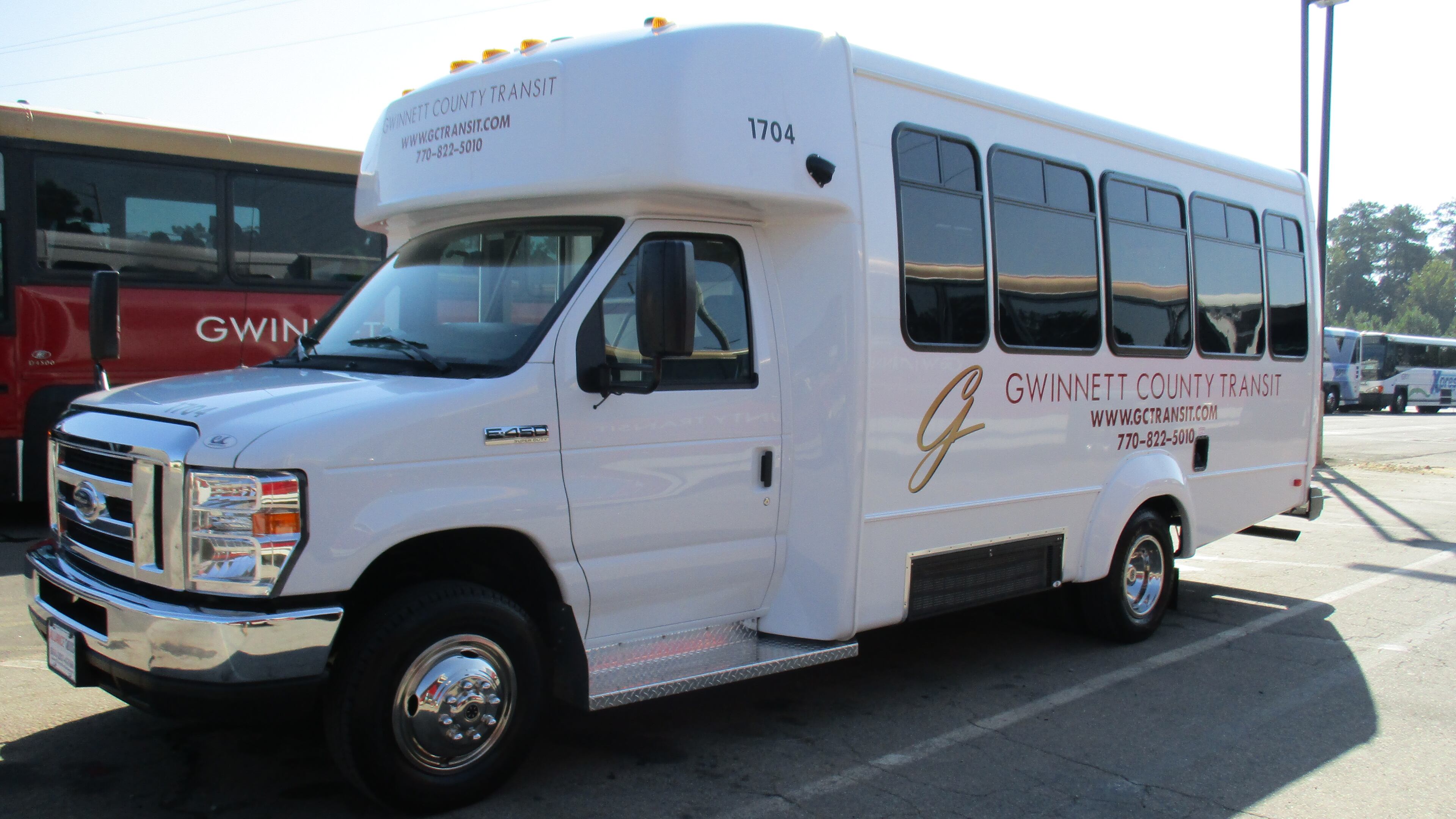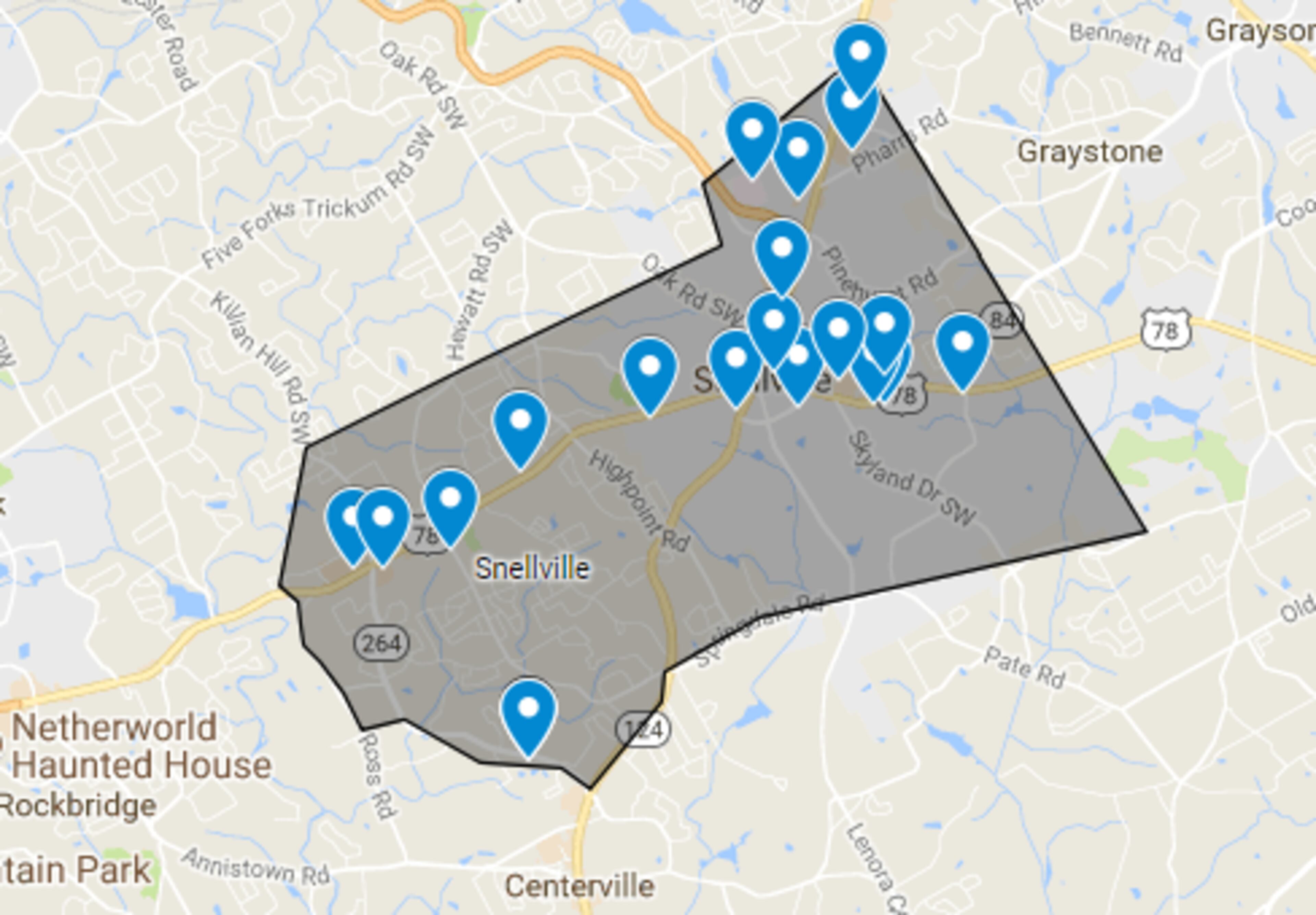Gwinnett hopes to bring microtransit to Snellville on permanent basis

Gwinnett County has declared its “microtransit” pilot project a success, and hopes to bring it back to the Snellville area on a permanent basis next year.
A similar service could also be in the cards for the Buford area.
“We didn’t know what to expect when we started the program,” said Gwinnett transit division director Karen Winger. “But we ended up carrying up to 344 people a day in a 17-square-mile area.”
The county began the Snellville microtransit program — which uses a handful of 12-passenger buses to provide on-demand rides to and from destinations within a defined area — in mid-September. Since then, more than 43,000 passengers have taken advantage of the free service covering parts of the U.S. 78 and Ga. 124 corridors.
The pilot program ends April 30.
Officials said this week they hope to bring the program back to Snellville in early 2020. But first they have to figure out what it’s going to cost — both for the county and for future passengers.
While taking advantage of the service was free during the pilot period, it won’t be moving forward.

Part of the goal of the pilot was to gather real data about the cost to operate microtransit, which is geared toward areas that aren’t dense enough to sustain traditional bus service. With that data in hand, the county now has to calculate the potential price of a more permanent service and decide what fares would be realistic while also helping offset some of that cost.
Chapman said it was too early to estimate potential costs of operating the system long-term. The pilot program was funded through tax dollars and continued Snellville service would be paid for the same way.
Gwinnett is budgeted to spend about $17.3 million on its overall transit system in 2019. All of that money comes from property taxes because voters rejected the county's transit referendum last month.
If approved, the referendum would’ve triggered a new 1 percent sales tax to help pay for billions of dollars worth of transit projects across Gwinnett. The plan included a MARTA rail extension into Norcross and greatly expanded bus services.
Without a large, direct funding source, most of Gwinnett’s mass transit ambitions are now in limbo.
But the county plans to move forward with incremental changes and expansions where it can. That includes Snellville microtransit and the potential for a similar program in Buford.
The transit plan calls for the Buford service area to be “anchored” at the park-and-ride lot near I-985 and Ga. 20 and cover much of the immediate area north of the interstate, including a significant portion of nearby Sugar Hill.
No timeline was provided for that proposal.
“Buford was the other area identified as an early implementation route,” Gwinnett Department of Transportation director Alan Chapman said, “but the Buford route is not yet funded through our current program.”
Potential microtransit passengers can call to request a ride or use an app that shows the bus location and estimated arrival time. An algorithm routes the closest bus to pick passengers up with “minimal disruption” for other riders, officials said.
The county reported that, during the Snellville trial period, the average time between a request being placed and pickup was about 23 minutes.
According to a survey conducted about midway through the pilot program in Snellville, about 49 percent of passengers were picked up from their homes. At about 14 percent each, work, school and shopping were the second most common pick-up locations.
The most common destinations for microtransit riders were also home (34 percent), shopping (20 percent), work (19 percent) and school (11 percent).



